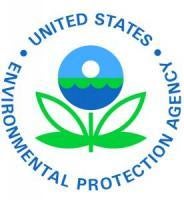The Agency will reduce animal testing, track mercury imports and manufacturing, and facilitate sharing of Confidential Business Information with emergency responders.
WASHINGTON — On the two-year anniversary of the Frank R. Lautenberg Chemical Safety for the 21st Century Act (Lautenberg Chemical Safety Act), the U.S. Environmental Protection Agency (EPA) announced that it has met its statutory responsibilities to release guidance and policy on confidential business information, a strategy to reduce animal testing, and a final mercury reporting rule.
“At this two-year milestone, I am proud to say that the Agency is delivering results and meeting the statutory responsibilities and deadlines of the new law,” said EPA Administrator Scott Pruitt. “These actions will boost transparency and increase public confidence in chemical safety.”
Under Administrator Pruitt, EPA has once again met the important deadlines set by the Lautenberg Chemical Safety Act, which amended the nation’s primary chemicals management law, the Toxic Substances Control Act (TSCA), by the Act’s June 22, 2018 deadline. The legislation received bipartisan support in the U.S. House of Representatives and the Senate, and provides significant new responsibilities and authorities to EPA to advance chemical safety.
EPA has completed the following milestones at this two-year anniversary:
- Finalized strategy to reduce animal testing. The strategy promotes the development and implementation of alternative test methods and strategies to reduce, refine, or replace vertebrate animal testing. It also incorporates input from public meetings and written comments. Learn more.
- Final rule on reporting mercury manufacturing and imports. The information collected through the new reporting requirements will be used to develop future inventories of mercury and mercury-containing product supply, use, and trade in the United States. Learn more.
- Guidance for state, tribal, and local governments, and medical personnel and emergency responders on sharing confidential business information (CBI). These guidances specify the process that will enable other governmental entities and medical and emergency personnel to request CBI information. Learn more.
- Policy and procedures for assigning unique identifiers to better publicly track information on chemicals while protecting CBI. An identifier will be applied to a substance, whose identity is protected as CBI, as well as to other related information or submissions concerning the same substance. This will allow the public to connect information related to the same substance, even while the specific identity is protected as confidential. Learn more.
- Guidance on structurally descriptive generic names. This guidance will allow EPA to share more information with the public about the structure of substances while protecting the confidential elements of the substance’s specific chemical identity. TSCA Submitters claiming the specific chemical identity of a chemical substance as CBI are required to supply a structurally descriptive generic name that can be disclosed to the public. Learn more.
In addition to these two-year anniversary milestones, EPA has diligently worked to implement the first major update to an environmental statute in 20 years. Here are some highlights:
On June 22, 2017 – the one-year anniversary of the Lautenberg Chemical Safety Act – EPA met milestones for three framework TSCA rules: the Prioritization Process Rule, the Risk Evaluation Process Rule, and the Inventory Rule. EPA’s TSCA team is working hard to implement these important processes.
EPA announced the first ten chemicals to undergo risk evaluations and then issued corresponding scope documents for these chemicals, which describe the scope of the risk evaluation to be conducted, including the hazards, exposures, conditions of use, and potentially exposed or susceptible subpopulations that the Agency expects to consider. And last month, EPA released problem formulation documentsto refine those scope documents. This is an important interim step prior to completing and publishing the final risk evaluations by December 2019.
EPA also released a systematic review approach for public comment to guide EPA’s selection and review of studies and provide transparency in how the Agency plans to evaluate scientific information. EPA proposed a significant new use rule (SNUR) for public comment enabling the Agency to prevent new uses of asbestos – the first such action on asbestos ever proposed as well.
EPA took a number of actions to address the review of new chemical submissions to the Agency: EPA decreased the backlog of new chemicals awaiting EPA review, increased transparency through a public meeting as well as a guidance document for companies and the public to better explain how our analyses are conducted, and added a pre-consultation step to engage early with companies, increase their certainty and improve new chemical submissions.
Pursuant to the amended law, EPA also proposed a fees rule on certain chemical manufacturers – including importers and processors – to provide a sustainable source of funding to support resources implementing EPA’s new responsibilities under the amended law.
Contact Us to ask a question, provide feedback, or report a problem.




 />i
/>i

